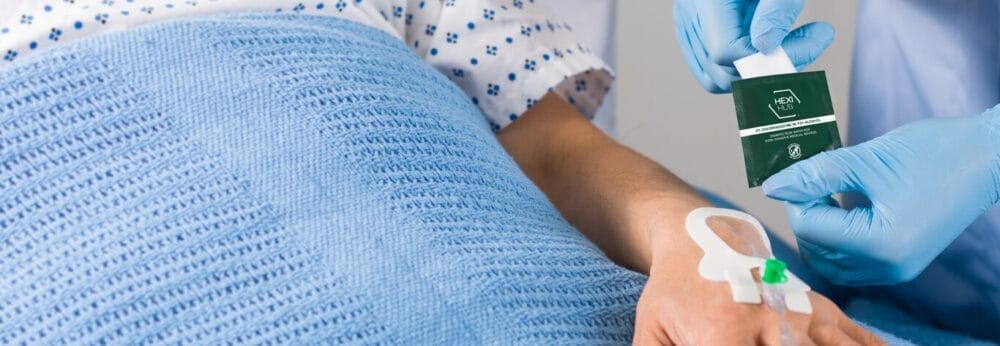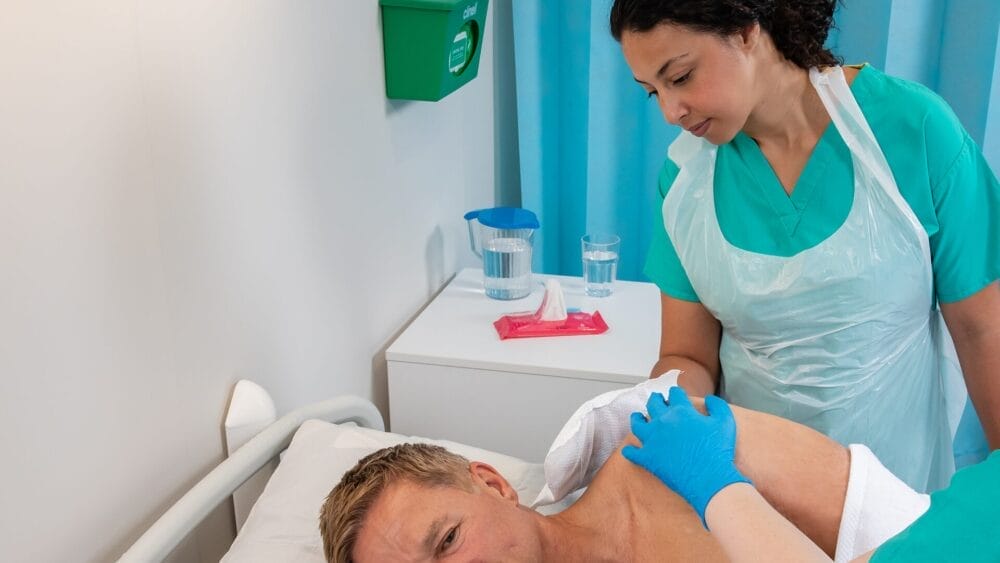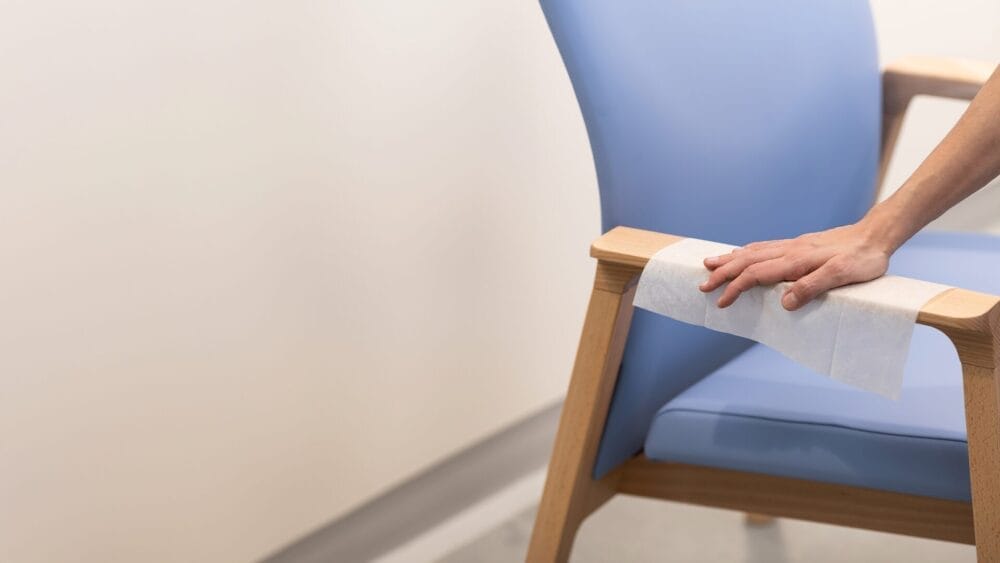Posted
20th June 2022
Events and Exhibitions
Our Clinical Directors, Karen Wares and Yvonne Carter, share their highlights from the Association for Professionals in Infection Control and Epidemiology (APIC) 2022 conference.
The Association for Professionals in Infection Control and Epidemiology (APIC) conference was held in Indianapolis. Bringing together over 1,300 infection preventionists to the event in-person and to a virtual audience of 1,800 who joined to celebrate its 50th anniversary! This year myself and Yvonne Carter, Clinical Director, attended over 40 sessions, visited over 165 exhibitor stands, read 73 posters and took part in the 5k Race for Wellness.

Leadership
The opening session hit hard on the appreciation for all those in Infection Prevention and Control and the tireless work carried out during the pandemic. All while encouraging them to own their new areas of leadership while navigating through more challenging times of change. The keynote address provided by Dede Halfhill, retired U.S Air Force Colonel, shared personal stories of her military career and that connection was at the core of every leadership moment. Highlighting that ‘The average person makes 35,000 decisions a day so it’s easy to go into autopilot mode. If we are on autopilot mode, in the midst of those challenges, we miss the opportunities to connect. We need to connect with our teams and connection is a choice’. Her talk also discussed vulnerability and encouraging vulnerability in others. ‘Vulnerability is the first thing I look for in you and the last thing I want to show you in me. However, when you show your vulnerability that is the fast-track to connection’.
Cleaning and disinfection
Cleaning and disinfection featured heavily on the programme, whether that was part of the pre-conference sessions, posters or the increasing number of sessions dedicated to long-term care.

Dr David Weber gave several presentations, firstly, he focused on biofilms on instruments and environmental surfaces. He raised that the abundance and prevalence of dry-surface biofilms (DSBs) in hospitals constitute an emerging problem.
Related research: Is a reduction in viability enough to determine biofilm susceptibility to a biocide?
Secondly, he discussed that social, economic, political, climatic, technologic, and environmental factors shape disease patterns and influence emergence, and that understanding and responding to disease emergence require a global prospective, conceptually and geographically. Summarising that the current global situation favours disease emergence.
“Infections are among the top 5 causes of death in nursing homes”
Next was his session on the role of the contaminated environment in transmission of healthcare associated infections (HCAIs) in extended care facilities. Dr. Weber highlighted the growing problem of an aging population and those infections are among the top 5 causes of death in nursing homes, and rank even higher among preventable causes. Colonisation and infection with MDROs (MRSA, VRE, ESBLs, CRE, C. difficile) is common in nursing home residents.
Prevention of MDRO colonisation/infection in nursing homes has likely been handicapped by:
- Lack of trained Infection Preventionists (IPs) and cleaning services in nursing homes.
- Rapid staff turnover.
- COVID-19 pandemic.
- High risk patients (co-morbidities, advanced age, indwelling devices, etc.)
- Long-term stay.
- Shared rooms and common areas with infrequent terminal disinfection.
Dr. Weber’s recommendations included continued research focusing on limited bundles with substantial education for staff and new disinfection methods (e.g. surface disinfectants with prolonged activity) and that increased funding for infection prevention is essential.
Dr Curtis Donskey’s session focused on floors, portable equipment, clothing and water systems. He encouraged the audience to look more closely at hospital floors as an underappreciated reservoir for transmission of healthcare associated pathogens and that there is increasing evidence of cross transmission from floors to hands of patients and to high-touch surfaces and that sinks are a reservoir of infection
Ventilation is key in mitigating transmission
Linda Lee, Maureen Spencer and Kathy Warye rose to the challenge of discussing ventilation. Recognising that most IP staff are not well versed in aerobiology, and ventilation has largely been the domain of engineering. As leading authorities endorse more rigorous air hygiene standards and new technologies enter the market, IPs will be called upon to help their institutions become more resilient.

However, despite these evidence gaps, experts agree that ventilation plays a key role in mitigating transmission. With each new surge in patients, this capacity had to be readdressed. They discussed that reliance on exact virus particle size, time claims etc are predominantly based on test ‘cut-off’ figures and test ‘time durations’ rather than evidence based on testing for these specifically. Focus was also on the different types of ventilation and the influence of different ventilation systems on contamination of medical devices.
They also touched on surface contamination and how air contamination may influence amount of contamination. They focusedparticularly on mechanisms such as settling and re-suspension, touch, shedding and coughing. Evidence on contact/settle plates concluded that the history of respiratory viral infections proves that outbreaks and epidemics are becoming more frequent and that there will be another around the corner.
Related article: Let’s keep ventilation open: Why The White House is clearing the air on COVID
Monkeypox
The late breaker session, delivered by Alex Isakov and Jill Holdsworth, was unsurprisingly on monkeypox. Monkeypox is considered less infectious than current SARS-CoV-2 variants with easier identification than COVID-19 (i.e. distinctive rash) and symptoms can typically include fever, chills, the distinctive rash, or new lymphadenopathy. However, onset of perianal or genital lesions in the absence of subjective fever has been reported. At the time of the session (14th June), the Monkeypox and Orthopoxvirus Outbreak Global Map sat at 1,678 cases. It was reiterated that monkeypox is rare and does not spread easily between people without close contact. The threat of monkeypox to the general population remains low.
Related article: Can Clinell products kill monkeypox virus?
Overcoming rejection
Tuesday’s keynote speaker Jia Jiang, owner of Rejection Therapy (a website that provides inspiration, knowledge and products for people to overcome their fear of rejection), helped the audience overcome their fears and take themselves to the next level. Rejection, Jia Jiang believes, is ‘just a numbers game’. ‘If I don’t get a yes, I didn’t talk to enough people. Rejection is nothing more than the opinion of the rejector’.We are programmed to believe it is all about us and that’s why it feels like an indictment of who we are. He shared many examples from his 100 days of rejection, which show you just how powerful you can be when you’re not held back and I guarantee you will laugh and cry!
So, with that, will you be asking to attend APIC 2023 in Orlando next year? These are just some highlights, for more from the event follow @kdwares, @apic and #APIC2022.
SHARE THIS ARTICLE
Tags
Latest News
Embracing sustainability and cost savings: The journey of Clinell Indicator Notes to paper-based solutions
At GAMA Healthcare, we’ve always prided ourselves on being at…
Introducing HEXI HUB: A seamless transition in our product line
We’re pleased to announce an update to our product offering…
Innovative solutions for tackling Carbapenemase-producing Enterobacteriaceae (CPE) at King’s College Hospitals
King’s College Hospital NHS Foundation Trust, one of London’s largest…
Gloves Off: reducing unnecessary plastic waste during environmental cleaning and disinfection
In this blog, Dr Phil Norville discusses the momentum-gaining ‘Gloves…






